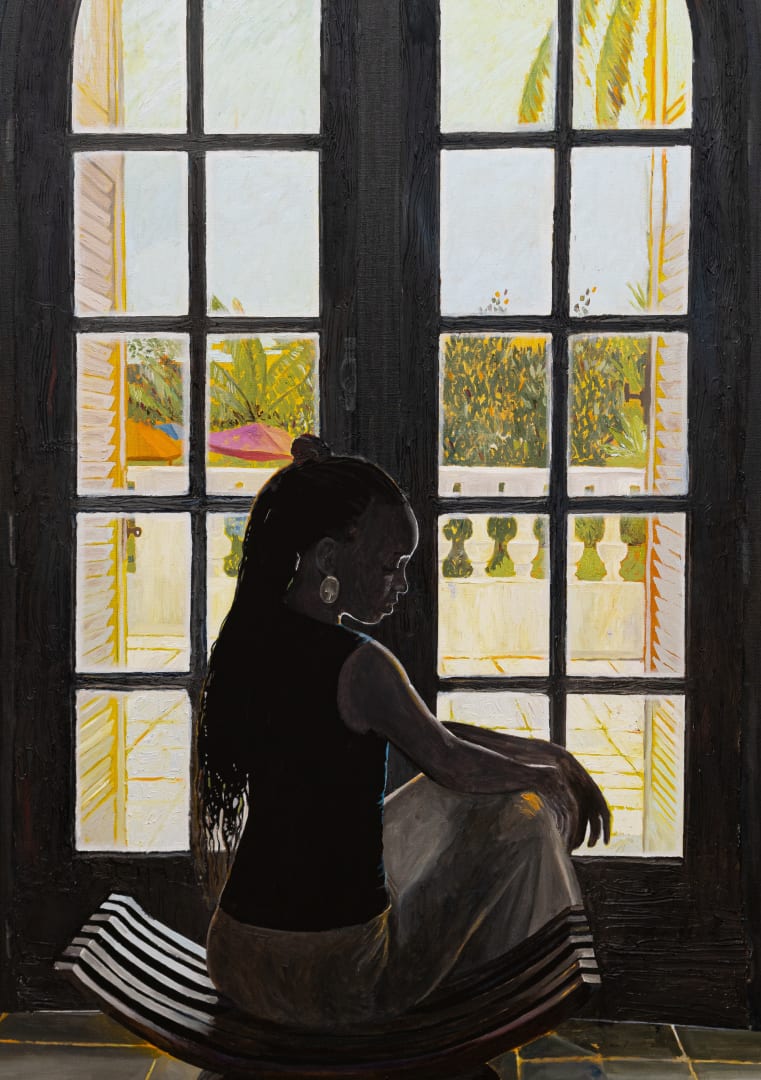Artist Elladj Lincy Deloumeaux presents “Au-delà du jardin, il y a la mer” [Beyond the garden is the sea], his second solo show at Galerie Cécile Fakhoury - Abidjan, from October 3 to December 28, 2024.
From his native Guadeloupe to his coastal residences in Dakar, Senegal, and Grand-Bassam, Côte d'Ivoire, Elladj Lincy Deloumeaux's practice is steeped in a cultural melting pot specific to the waters of the Black Atlantic (in reference to Paul Gilroy and his book L'Atlantique noir. Modernité et double conscience, 1993). The sea, symbol of infinity and movement, becomes a metaphor for mother and Mother Earth, evoking maternity, protection and transmission. A central figure of creation, it is also a place of memory and origins, where the artist connects to his roots while looking towards the unknown.
"Au-delà du jardin, il y a la mer" [Beyond the garden is the sea] is a meditation on the notion of “home” - mobile, fluid and ever-changing - in relation to the reinvention of being in territories marked by history, encounters and memories. Conceived as a journey, the exhibition is as much a physical as a spiritual exploration, which questions intimate space and the relationship to oneself in the world.
The artist conveys this duality, intimate space and the greater world, rootedness and openness, through the image of Creole gardens (in reference to Patrick Chamoiseau and his book Texaco, 1992). Here, the garden symbolizes a personal, protected and familiar space, a place of autonomy and collective memory.
How can we define a space that belongs to us in an ever-changing world? How is this “home” reflected in artistic creation? These questions run through all the works presented, blurring the boundaries between the intimate and the extimate.
The exhibition is divided into three distinct spaces. An intimate interior space reveals scenes of everyday life. The materials used are reminiscent of domestic elements such as tiles, shutters and a mirror inserted into a work. A second space creates a link between inside and outside, with figures portrayed near windows taking the viewer's gaze “beyond gardens”. Finally, a third, more spiritual or mental space presents dreamlike scenes exploring the horizon and infinity.
The presence of a dome, magnified by the spiral scenography and inspired by sacred architecture and the circularity of huts, reflects the idea of interconnection around a gathering place. The clay-covered walls of the exhibition also evoke these vernacular inspirations and fractal constructions, in this case referring to the garden and nourishing earth. They establish a symbolic dialogue with the sea, both a destructive and creative force.
In collaboration with his sister, Orlane Lincy Deloumeaux, interior architect and designer, the duo have designed a scenography comprising a range of exhibition furniture, testifying to the traditional skills of Grand-Bassam artisans. The pieces include an altarpiece with rattan doors (La jeune femme à la tresse, 2024), sliding panels (La levée de rideau sur le Plateau de Dakar II, 2024), a bird panel (Là où les oiseaux dansent, 2024), and bronze pendants. Working with local artisans and using local materials is an essential part of the artist's creative process. In addition to forging links with the local scene, he also develops new techniques.
"Au-delà du jardin, il y a la mer" [Beyond the garden is the sea] is a meditation on the mental architecture that each of us builds for ourselves, shaped by memories, emotions and the territories we have crossed. Each work can be read as a territory in itself. In a visual contemporary dance, references borrowed from various universes and temporalities meet, from African antiquity to the decorative arts, via traditional crafts and the art of portraiture in classical European painting.
This introspective journey, beyond the intimate garden, takes us to the vast, undefined sea, where identity dissolves and reforms, free to reinvent itself. The exhibition is a space for encounter and exchange, where past, present, here and elsewhere mingle in an uninhibited dialogue.

